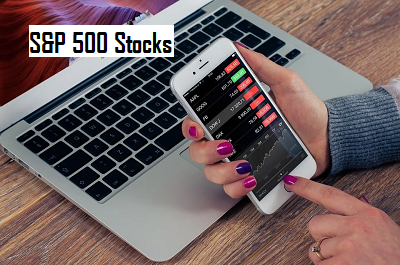What Is The S&P 500 And How Does It Work?
Standard and Poor’s 500 stocks is a measurement of the performance of 500 of the largest US companies, based on the number of shares they have outstanding. The Standard and Poor’s 500 index was started in 1965, after which it became an important component in many financial calculations.

What is the Standard and Poor’s 500
The Standard and Poor’s (S&P) is a financial institution that provides ratings for stocks and bonds. The S&P is one of the most important financial institutions in the world, and its ratings are used by investors to make decisions about where to invest their money.
The S&P issues two types of ratings: stock ratings and bond ratings. Stock ratings are issued for stocks listed on major exchanges, such as the New York Stock Exchange (NYSE) or the Nasdaq. Bond ratings are issued for bonds that are traded on the secondary market.
The S&P issues ratings on a scale of AAA to D. AAA is the highest rating, and it indicates that a stock or bond is a very safe investment. D is the lowest rating, and it indicates that a stock or bond is a very risky investment.
Investors use the S&P’s ratings to make decisions about where to invest their money. If an investor is looking for a safe investment, they will look for stocks or bonds with high S&P ratings. If an investor is looking for a risky investment, they will look for stocks or bonds with low S&P ratings.
What Is the Stock Market?
The stock market is a collection of markets where stocks (pieces of ownership in businesses) are traded between investors. It usually refers to the exchanges where stocks and other securities are bought and sold. The stock market can be used to measure the performance of a whole economy, or particular sectors of it.
Does the Standard and Poor’s 500 Impact the Stock Market?
The Standard and Poor’s (S&P) is a financial institution that provides ratings for stocks. These ratings can impact the stock market, as they provide investors with information about a company’s financial stability. A good rating from the S&P can give a stock a boost, while a bad rating can cause it to drop. D4G6H2H7
The S&P is just one of many factors that can impact the stock market. Other factors include the economy, political instability, and natural disasters. However, the S&P’s ratings are often closely watched by investors, as they can provide valuable insight into a company’s financial health.
How is Standard and Poor’s 500 created?
Standard and Poor’s (S&P) is a financial institution that provides ratings for stocks, bonds, and other investments. S&P is best known for its stock market indices, such as the S&P 500.
S&P was founded in 1860 by Henry Varnum Poor. The company originally provided information on railroad bonds. In 1923, S&P began to provide ratings for stocks. In 1941, S&P launched the first stock market index, the Standard & Poor’s Composite Index.
Today, S&P is a division of McGraw Hill Financial. It continues to provide ratings for stocks, bonds, and other investments. It also offers research and analysis on financial markets.
What are the Top 10 Stocks in Standard and Poor’s 500?
The S&P 500, also known as the Standard and Poor’s 500, is a stock market index that comprises 500 of the largest publicly traded companies in the United States. These companies are chosen based on their market capitalization, which is the total value of all shares outstanding.
The S&P 500 is widely considered to be a leading indicator of the stock market and the overall economy. The index is used by investors and analysts to gauge the performance of the stock market and to make investment decisions.
The top 10 stocks in the S&P 500 by market capitalization are:
- Apple (AAPL)
- Microsoft (MSFT)
- Amazon (AMZN)
- Facebook (FB)
- Alphabet (GOOGL)
- Berkshire Hathaway (BRK-A)
- JP Morgan Chase (JPM)
- ExxonMobil (XOM)
- Johnson & Johnson (JNJ)
- Procter & Gamble (PG)
